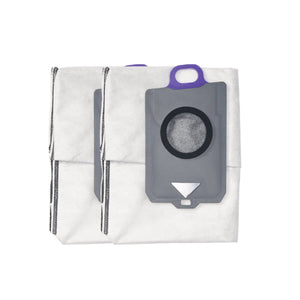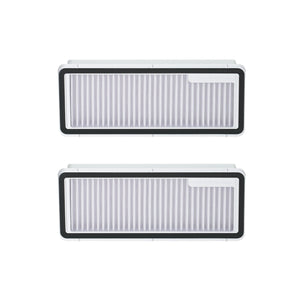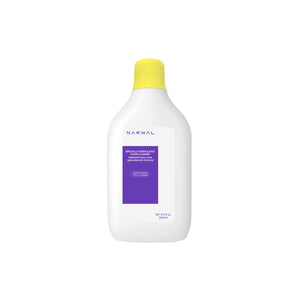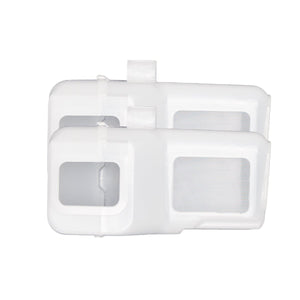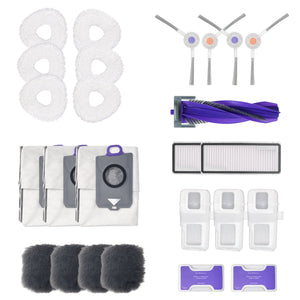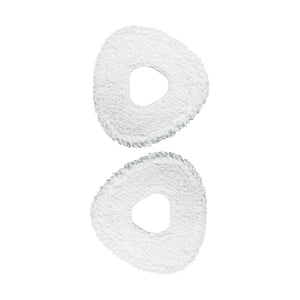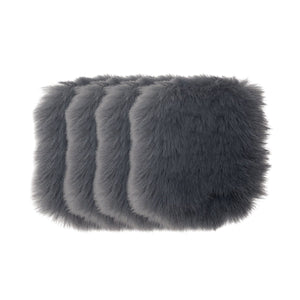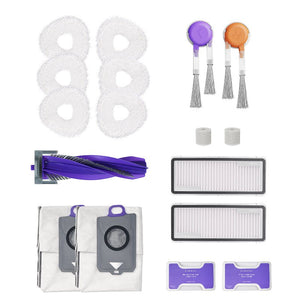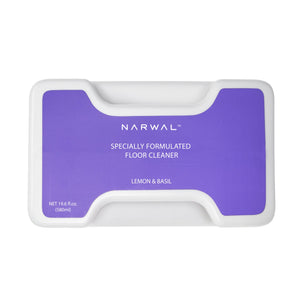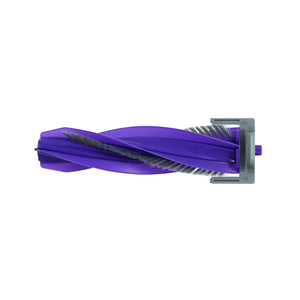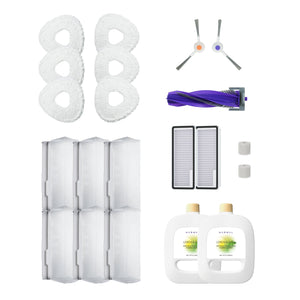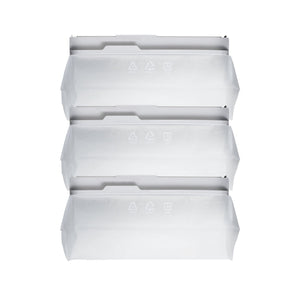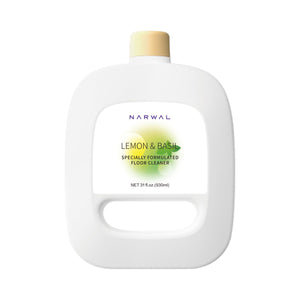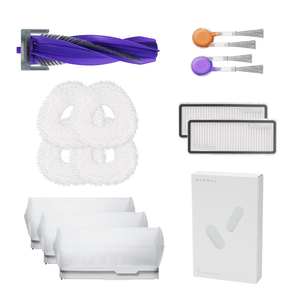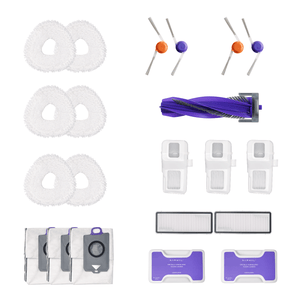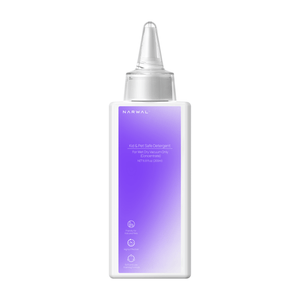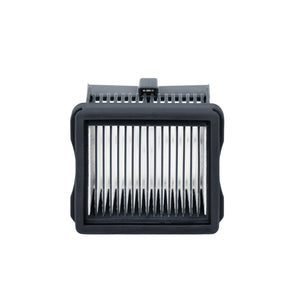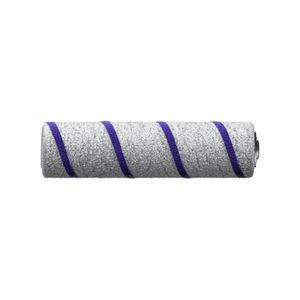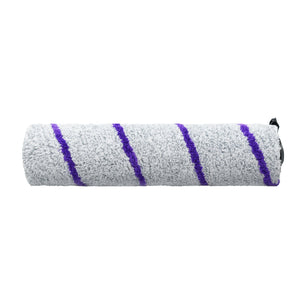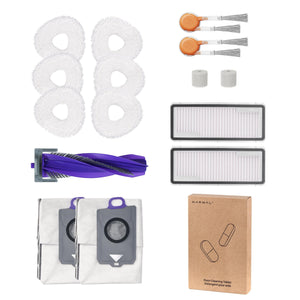Steam mops and vacuum mops both clean floors, but they do it in very different ways. If you're looking for deep sanitizing or quick everyday mopping, choosing the right one makes a big difference.
In this article, we’ll compare steam mops and vacuum mops to help you make the right choice for your home. We’ll explain how each one works, their pros and cons, and which tasks they’re best for. From cleaning power to ease of use, we’ll break down everything you need to know. We’ll also look at how each mop performs on different floor types and give you the lowdown on their maintenance and cost.
By the end, you’ll be able to choose the mop that fits your cleaning needs and lifestyle perfectly.
The Definition Difference: Steam Mop vs. Vacuum Mop
A steam mop is a cleaning tool that uses steam to clean and sanitize floors. It heats water inside the mop to create steam, which is then released through the mop head. The steam loosens dirt, oil, and stains, and kills germs. Steam mops rely on steam and water to clean, offering a chemical-free and eco-friendly solution. They are ideal for deep cleaning and sanitizing surfaces, but are not suitable for wet cleaning. Steam mops come in several types, including traditional steam mops, 2-in-1 steam mops, cordless steam mops, and steam mops with adjustable steam settings.
A vacuum mop is a cleaning tool that combines both vacuuming and mopping functions. It first uses suction to pick up dry dirt, dust, and debris, then applies water to clean up spills and stains. Many vacuum mops also allow you to add cleaning agents to the water, which makes them more effective at handling tough stains. Vacuum mops are ideal for cleaning both wet and dry messes, making them perfect for quick clean-ups and regular maintenance. There are different types of vacuum mops, such as 2-in-1 vacuum mops, cordless vacuum mops, wet and dry vacuum mops, and robot vacuum mops.
The Pros and Cons: Steam Mop vs. Vacuum Mop
Now, let's compare the pros and cons of each tool. We'll look at key factors like cleaning power, ease of use, and maintenance to help you choose the right one for your home.
|
Aspect |
Steam Mop |
Vacuum Mop |
|
Cleaning Power |
Great for deep cleaning and sanitizing. |
Good for regular maintenance clean-ups. |
|
Pet Hair Removal |
Not effective at picking up pet hair. |
Excellent for picking up pet hair. |
|
Stain Removal |
Effective for tough stains. |
Works for light stains. |
|
Ease of Use |
It can be heavy and takes time to heat up. |
Lightweight and easy to use. |
|
Water Usage |
Requires frequent refilling. |
Uses less water, fewer refills. |
|
Energy Consumption |
Uses more energy due to steam heating. |
More energy-efficient, uses suction. |
|
Surface Compatibility |
Best for hard, sealed floors. |
Works on multiple surfaces. |
|
Maintenance |
Needs regular cleaning of the water tank. |
Easy maintenance, just empty the dustbin. |
|
Noise Level |
Generally quiet. |
It can be louder due to suction power. |
|
Cost |
Generally, more expensive. |
More affordable overall. |
Cleaning Effectiveness Comparison: Steam Mop vs Vacuum Mop
When it comes to cleaning, steam mops and vacuum mops each have their unique strengths. We'll now compare how they perform in five key areas: deep cleaning, dust and debris removal, pet hair removal, stain removal, and sanitization.
Deep Cleaning Ability – Steam Mop Wins
A steam mop is better for deep cleaning. The high heat of the steam loosens dirt and grime, making it great for tough cleaning jobs. It’s especially effective on sticky messes and in areas that need sanitizing, like kitchens and bathrooms.
Vacuum mops work better for light cleaning. They do a good job for regular maintenance, but they don’t provide the deep cleaning that steam mops do. If floors are very dirty, a steam mop is the better choice.

Dust and Debris Removal – Vacuum Mop Wins
For dust and debris removal, vacuum mops are more effective. The suction strength lets them collect dirt, dust, crumbs, and other debris. It’s perfect for homes with a lot of foot traffic or pets.
Steam mops are less effective for dust removal. While they can pick up some dust, they’re better suited for cleaning and sanitizing rather than removing dry debris. You might still need to vacuum first before using a steam mop.
Pet Hair Removal – Vacuum Mop Wins
For pet hair, vacuum mops are definitely the better choice. Their suction power pulls pet hair off floors, carpets, and furniture. For homes with pets, a vacuum mop helps you handle shedding.
Steam mops don’t have the ability to pick up pet hair. They focus on sanitizing and cleaning, but you’ll need to use a vacuum to remove the hair first.
If you would like to find the best robot vacuum for pet hair, you can click here.
Stain Removal – Steam Mop Wins
In terms of stain removal, steam mops are more effective. Steam heat removes tough stains like grease, coffee, or wine. It’s especially useful for cleaning hard surfaces like tile and stone.
Vacuum mops can handle light stains but won’t be as effective on tough, sticky stains. If you have hard-to-remove stains, a steam mop will be the better tool.

Sanitization and Hygiene – Steam Mop Wins
When it comes to sanitization, steam mops are the best choice. Steam's high heat destroys germs, bacteria, and allergens, making it ideal for homes with kids, pets, or allergies.
Vacuum mops clean the surface but don’t sanitize. They remove dirt and dust, but they don’t offer the same level of disinfection that a steam mop provides. If hygiene is a priority, you’ll want to choose a steam mop.
Here is a concise table for cleaning effectiveness comparison.
|
Aspect |
Steam Mop |
Vacuum Mop |
|
Deep Cleaning |
Wins |
Light cleaning |
|
Dust Removal |
Less effective |
Wins |
|
Pet Hair Removal |
Not effective |
Wins |
|
Stain Removal |
Wins |
Light stains |
|
Sanitization |
Wins |
No sanitization |
Which One Mops Better?
If mopping is your main focus, steam mops offer deeper cleaning by using hot steam to loosen sticky messes and kill germs. They're great for kitchens, tiles, and sanitizing needs.
Vacuum mops clean faster and handle both wet and dry messes at once. They’re ideal for daily floor care, especially in homes with pets or kids.
Compared to robot or spin mops, steam and vacuum mops give more control and better results on tough spots. If you want power, go with steam. If you want speed, vacuum mops win.
Performance on Different Surfaces: Steam Mop vs Vacuum Mop
Both steam mops and vacuum mops perform differently depending on the type of floor. Let’s take a closer look at how steam mops and vacuum mops work on common floor surfaces, including hardwood, tile, vinyl, carpet, laminate, and concrete.
Hardwood Floors – Vacuum Mop Wins
Steam mops work on sealed hardwood floors but need careful use. The heat from the steam can damage unsealed wood, so it’s important to use the lowest steam setting to avoid excess moisture. Steam mops are great for deep cleaning and sanitizing hardwood, making them perfect for kitchens and living areas with high foot traffic.
Vacuum mops are safe for hardwood floors and excellent for removing dust, dirt, and small debris. They are ideal for regular cleaning but don't offer the deep cleaning or sanitization of a steam mop.
Related Reading: best robot vacuum for hardwood floors

Tile Floors – Steam Mop Wins
Steam mops are perfect for tile floors, especially when it comes to cleaning grout and removing stubborn stains. The high-temperature steam helps break down dirt and germs, leaving your tiles not only clean but sanitized as well. They're perfect for bathrooms and kitchens.
Vacuum mops work well for daily cleaning and removing dirt from tile floors. However, they don’t sanitize or clean grout as effectively as steam mops. They’re better suited for quick clean-ups, but lack the deep-cleaning power of steam.
Related Reading: best robot vacuum for tile floors
Vinyl Floors – Steam Mop Wins
Steam mops work well on vinyl floors, but you need to be cautious. Excessive steam can damage the vinyl, so it's best to use the lowest setting and avoid over-saturating the surface. Steam mops do a good job of cleaning and sanitizing vinyl floors, especially in high-traffic areas.
Vacuum mops are ideal for regular cleaning of vinyl floors, effectively removing dirt, dust, and debris. However, unlike steam mops, they don’t offer the same level of sanitization, so they are better for light maintenance cleaning rather than deep cleaning.
If you would like to know how to clean vinyl floor, you can click here.
Carpet – Vacuum Mop Wins
Steam mops are not suitable for carpets. The steam can damage carpet fibers, and they are not designed for fabric. For carpets, it’s best to use a traditional vacuum cleaner or a carpet-specific cleaner.
Vacuum mops may work on low-pile carpets, but they’re not as effective as traditional vacuums. They can pick up light debris and dust but won’t provide deep cleaning or remove embedded dirt and pet hair. A regular vacuum cleaner is far better for cleaning carpets.
Related Reading: best robot vacuum for carpet
Laminate Floors – Vacuum Mop Wins
Steam mops should not be used on laminate floors. Steam's heat and moisture may warp or peel the laminate. For laminate floors, it’s better to use a dry mop or a vacuum to pick up dust and debris.
Vacuum mops are safe for laminate floors and great for regular cleaning. They are perfect for picking up dust, dirt, and pet hair but don’t provide the deep cleaning or sanitizing benefits of a steam mop.
Related Reading: How to keep your laminate floor spotless
Concrete Floors – Steam Mop Wins
Steam mops are highly effective on concrete floors, especially in areas like basements or garages where dirt and stains are common. The steam cleans and sanitizes the surface, making it ideal for spaces with heavy dirt build-up.
Vacuum mops are also good for cleaning concrete floors, as they pick up dirt, dust, and debris efficiently. However, they don’t offer the same level of sanitization or deep cleaning that steam mops do.
Here is a brief table for cleaning performance on different floors.
|
Surface |
Steam Mop |
Vacuum Mop |
|
Hardwood |
Deep clean |
Regular clean |
|
Tile |
Best for grout |
Light cleaning |
|
Vinyl |
Cautious use |
Regular clean |
|
Carpet |
Not suitable |
Light cleaning |
|
Laminate |
Not suitable |
Regular clean |
|
Concrete |
Deep clean |
Regular clean |
Operation Convenience: Steam Mop vs Vacuum Mop
Choosing between a steam mop and a vacuum mop depends a lot on how easy each one is to use. Let’s compare them based on ease of use, setup and preparation, and mobility.
Ease of Use – Vacuum Mop Wins

Steam mops are easy to use, but they need time to heat up before you can start cleaning. You also need to adjust the steam level for different floors. They work fine, but they're a bit heavy, especially with a full water tank.
Vacuum mops are simple to use. You don’t need to wait for them to heat up, and they’re light and simple to move around. They're good for quick clean-ups, but not as deep as steam mops.
Setup and Preparation – Vacuum Mop Wins
Steam mops take a little longer to get ready. You need to fill the water tank and wait for it to heat up before you can clean. You might also need to refill the water tank if you're cleaning a big area.
Vacuum mops set up fast. Fill the tank, turn it on, and clean. No heat-up wait, ideal for quick cleaning.
Mobility and Maneuverability – Vacuum Mop Wins
Steam mops can be a bit heavy, especially the ones with bigger water tanks. They're fine for big areas but tough in tight spots.
Vacuum mops are lighter and easier to move around. They work well in small spaces and are easy to carry from room to room.

|
Aspect |
Steam Mop |
Vacuum Mop |
|
Ease of Use |
Takes time to heat up |
Quick to use |
|
Setup |
Takes longer |
Quick setup |
|
Mobility |
Heavier |
Lighter |
Maintenance and Cost Comparison: Steam Mop vs Vacuum Mop
When deciding between a steam mop and a vacuum mop, consider their maintenance needs, cost, and how long they last. Here’s a breakdown of each mop’s upkeep and costs:
Maintenance Requirements – Vacuum Mop Wins
Steam mops require more maintenance. After using, clean the water tank and mop head. If there's a filter, it might need changing. The microfiber cloths also need regular washing.
Vacuum mops are easier to maintain. You just need to empty the dustbin and clean or replace the mop pads and filters. They need less care than steam mops, so they're more convenient for regular cleaning.
Cost of Ownership – Vacuum Mop Wins
Steam mops are usually more expensive to buy upfront, with additional costs for replacement pads, filters, and other accessories over time. However, for deep cleaning and sanitizing, many people find this cost worthwhile.
Vacuum mops usually cost less upfront. While you’ll still need to replace pads and filters occasionally, their ongoing costs are usually lower than that of steam mops. But over time, costs can rise, especially with regular use.
Longevity – Vacuum Mop Wins
Steam mops are durable but may wear out faster with frequent use, especially if you often fill and empty the water tank. Proper maintenance, like cleaning the tank and replacing filters, can extend their life.
Vacuum mops tend to last longer, as they don’t rely on steam. They handle daily use well, and with regular care (emptying the dustbin and replacing filters), they can last for many years.
|
Aspect |
Steam Mop |
Vacuum Mop |
|
Maintenance |
More effort needed |
Easier upkeep |
|
Cost |
Higher over time |
Lower overall |
|
Longevity |
Wears faster |
Lasts longer |
Energy and Water Usage Comparison: Steam Mop vs Vacuum Mop
When choosing between a steam mop and a vacuum mop, it’s important to consider how much energy and water they use. Let’s compare energy efficiency, water usage, and environmental impact for both mops.
Energy Efficiency – Vacuum Mop Wins
Steam mops use more energy than vacuum mops. They need electricity to heat water and produce steam, which uses more power. While steam mops offer deep cleaning and sanitizing, their higher energy usage can add up, especially with frequent use.
Vacuum mops, on the other hand, use less energy because they don’t require heating water. They rely on suction to clean, making them more energy-efficient, especially for regular, light cleaning.

Water Usage – Vacuum Mop Wins
Steam mops use water to generate steam. While they are fairly efficient, they require refilling the water tank during longer cleaning sessions. However, they don’t waste water with rinsing or wet mopping, making them more water-efficient than traditional mopping methods.
Vacuum mops use less water overall. They are designed to use just enough water to clean the floor without excessive moisture. While the water tank still needs to be refilled during extended cleaning sessions, vacuum mops tend to use less water than steam mops.
Environmental Impact – Vacuum Mop Wins
Steam mops have a higher environmental impact due to their increased energy use. However, they're eco-friendly with chemicals. They clean without harsh ones, making them safer for home and environment.
Vacuum mops are more eco-friendly because they use less energy and water. They also require fewer chemicals, which reduces their overall environmental footprint. However, regular replacement of accessories like pads and filters still adds to their environmental impact.
|
Aspect |
Steam Mop |
Vacuum Mop |
|
Energy Use |
Higher |
Lower |
|
Water Use |
More |
Less |
|
Eco Impact |
No chemicals, more power |
Lower power, fewer chemicals |
FAQs
Can a Vacuum Mop Take the Place of a Traditional Vacuum?
No, a vacuum mop cannot fully replace a traditional vacuum cleaner. It works well on hard floors and light debris, but it’s not effective on carpets or larger debris.
Steam Mop vs. Spin Mop: What Sets Them Apart?
Yeah, there's a difference. A steam mop uses steam for deep cleaning and sanitizing, while a spin mop relies on water and manual wringing for cleaning. Steam mops sanitize, while spin mops are better for general cleaning without sanitizing.
Is a Vacuum Mop Worth Buying for Daily Floor Cleaning?
Yes. Vacuum mops are great for quick cleaning. They vacuum and mop at the same time, which saves time. They work well on hard floors and for everyday messes.
Vacuum Mop Combo: What Are the Pros and Cons?
Pros: Saves time, handles both dry and wet messes, uses less water.
Cons: Doesn’t clean carpets well, not strong enough for deep stains, less sanitizing than a steam mop.
Steam Mop vs. Robot Mop: What’s the Difference?
A steam mop cleans deeper and kills germs with hot steam. A robot mop runs on a schedule and works by itself. Steam mops are better for tough messes. Robot mops are better for daily light cleaning.
Want a Smarter Way to Mop and Vacuum?
If you're looking for a vacuum mop that goes beyond daily cleaning, the Narwal S30 Pro Wet Dry Vacuum offers intelligent power, real-time dirt detection, and deep cleaning with hot water. It cuts through tangled hair, reaches edges and corners, and self-cleans at 194°F—no bending, no mess.
[cta:narwal-s30-pro-wet-dry-vacuum]
Which Mop Is Right for You?
Not sure which mop fits your home best? Here’s a quick guide to help you decide based on your cleaning habits, home type, and daily needs:
|
If you... |
Best Choice |
|
Have pets or kids and need quick cleanups |
Vacuum Mop |
|
Want deep cleaning and floor sanitizing |
Steam Mop |
|
Prefer less effort and more automation |
Robot Mop (Narwal S30 Pro) |
|
Need to clean sticky stains and hard tiles |
Steam Mop |
|
Want one tool for daily dirt and wet messes |
Vacuum Mop |
|
Live in a small space and want quick setup |
Vacuum Mop |
|
Care about chemical-free cleaning |
Steam Mop |
Final Verdict: Steam Mop vs Vacuum Mop – Which One Wins?
Choosing the right mop depends on your cleaning needs. If deep cleaning and sanitization are a priority, a steam mop is ideal for tough stains and hard surfaces like tile and vinyl.
If you want something quick and efficient for everyday cleaning, a vacuum mop is the better choice. It’s perfect for regular maintenance on hardwood, tile, or vinyl floors.
Consider what matters most for your home, whether it’s powerful cleaning or daily convenience, and choose the mop that fits your lifestyle.





















